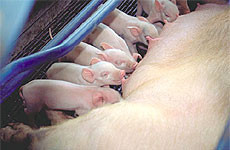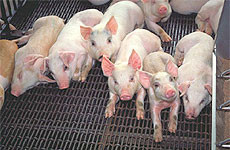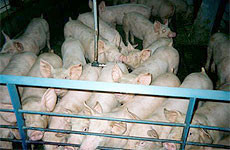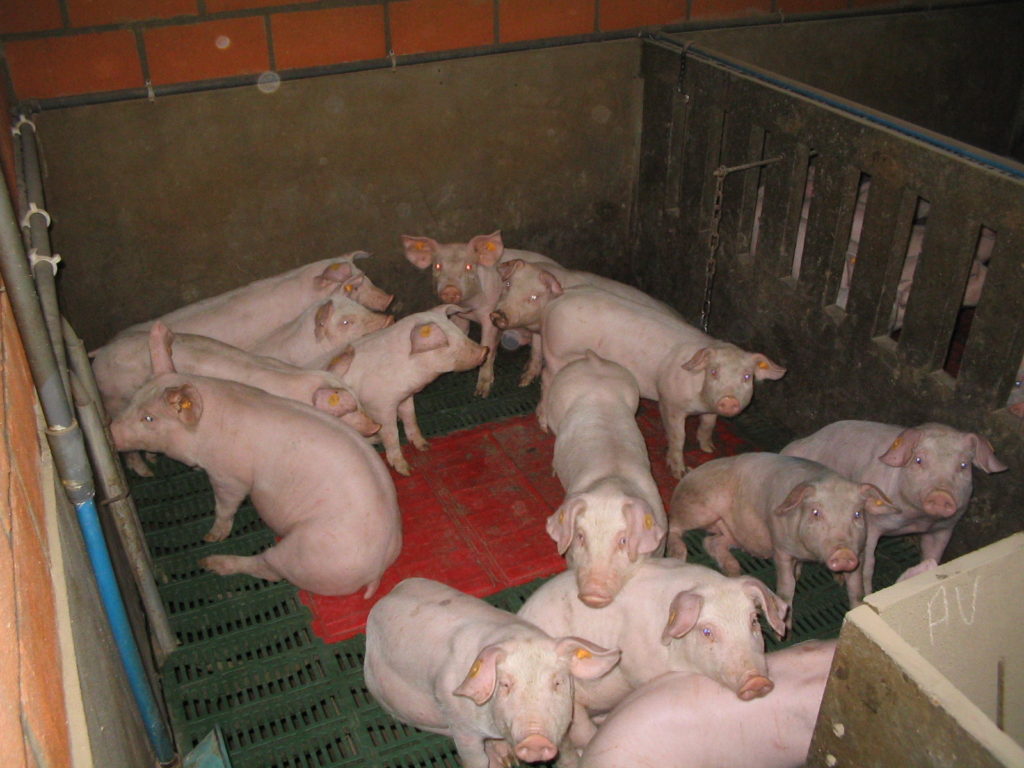THROUGH TOTAL HYGIENE TO INCREASED PRODUCTIVITY AND COST SAVING
The use of electrochemistry in infection control in the pig industry is not new. It has been practiced in the former USSR Republics by government institutes responsible for pig farming and meat production. Only now in the west with the development of ECA devises can the same protocols be introduced.Pressures on the industry to rethink the way it manages animal welfare as well as removing the antibiotics from feed has led to a renewed interest in ECA technology.
Infection control studies of the living environment for pigs indicate that adequate sanitation between and during life cycles still holds the major key to addressing the problems of recurring disease. Studies indicate that buildings can be prone to ‘handing on’ to disease due to a variety of sometimes unfathomable factors. Cleaning regimes and the design of buildings are the main factors which govern the incidence of serious re-occurrence of disease. Biocides directives from the EU put pressure on growers to eliminate the ‘dirty’ technologies for sanitizing living environments.
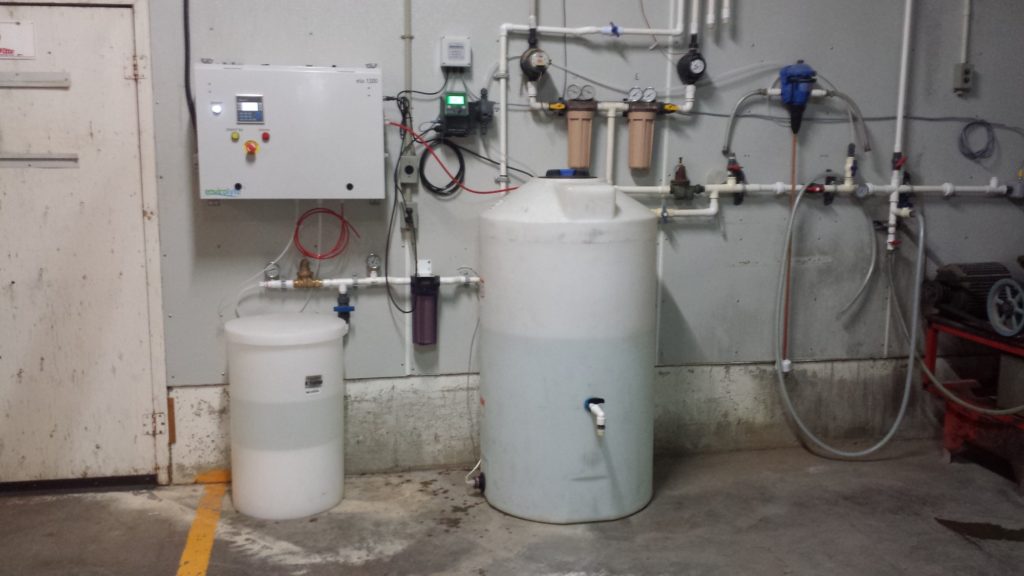
The health and safety concerns of the pig industry workers are of course paramount and this can lead to increased downtimes, caused by following the essential mandatory safe practices. In an industry where a penny saved on a piglet has a major impact on the bottom line, procedures and protocols for eliminating disease and increasing productivity are worthy of consideration.
Factors such as hygiene, quality and price are pivotal to an industry which is highly competitive and regulated by food standard bodies.
Pig producers are constantly looking for ways to improve performance. Factors which govern this goal are outlined below.
- Improvement in food conversion ratio
- Reduced factory downgrades
- Healthy and more active pigs
- Lower mortality rates
- Creating a regime which allows for the elimination of routine antibiotic use. [In feeds] Which can be used as a marketing plus.
Envirolyte Industries International Ltd. has the capability of taking a holistic approach to infection control in the industry from farrowing to fattening pigs.
Hygiene protocol for Complete cycle
- Pre and after farrowing udder disinfecting with Anolyte. The procedure should be continued 5 – 7 days after farrowing.
- Additional sow feed disinfecting with Anolyte 5 – 7 days before and 5 – 7 days after farrowing.
- Piglets feed disinfecting at a measured ratio after they are switched to dry or liquid feed.
- Drinking water disinfecting with Anolyte at a measured ratio.
- In case of diarrhoea a mixture of water and Anolyte should be given to a diseased animal.
Hygiene protocol for Farrowing cycle
- Disinfecting on a fixed schedule of pig barns by fogging Anolyte. Fixed ratio per m3 should be observed.
- Disinfecting of drinking water by Anolyte at a fixed ratio.
- I case of acute diarrhoea a mixture at certain ratio of Anolyte and water should be given to piglets. Fogging of Anolyte on a more frequent schedule is advised.
- When doing castration Anolyte should be applied for fast recovery.
- Uterus disinfecting with Anolyte is also advised.
Hygiene protocol for Weaner cycle
- Pig farm disinfecting by fogging Anolyte before new arrivals and during the cycle on a fixed schedule.
- Drinking water disinfecting by adding Anolyte into the water at a certain ratio.
- In case of acute diarrhoea use mixture of Anolyte and water as advised for Farrowing cycle.
Hygiene protocol for Grower / Finisher cycle
- Drinking water disinfecting by adding Anolyte into the water at a certain ratio.
- Disinfecting of pig barns by fogging Anolyte at a certain ratio in the presence of animals and on a fixed schedule.
- Special fogging procedures should be applied in case of cough, pneumonia or any respiratory disease.
- For all cycles we advise to disinfect liquid and/or dry feed by spraing/adding Anolyte at a certain ratio per ton.
The reported benefits of anolyte applications in Pig farming:
- mortality rate reduction by 50-80%
- medicine cost reduction by 50-90%
- better feed conversion ratio
- more effective diseases control and cure
- complete hygiene protocol without chemicals
- better weight gain at all cycles of pig growing





